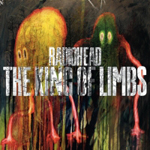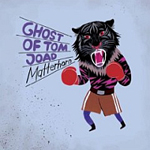This review page is supported in part by the sponsors whose ad banners are displayed below |
 |
 |
|
 |
Radiohead’s "Codex" was next. Here a piano plus strangely 70’s retro synth pedals accompany Thom Yorke’s voice whilst a lone synthetic bass drum provides a minimalist heart beat below. This became another lesson in realism. Thom York’s throat turned into its own bona fide instrument. Each nuance, each hoarse resonance, each shift from chest to head voice was tracked so strongly by my Neat Momentum 4i speakers that a feeling of getting entranced was a given. Though voice and piano central occupy the same frequency range, their tone colors are wildly dissimilar. Here even the synth clouds felt most accurate to form a kind of acoustic/electronic yin/yang with the concert piano. |
|
|
|
|
Intermediate conclusion. Audiomat’s Aria is possessed of a quick but on substance not fully developed low bass which transitions seamlessly into a highly nuanced deep-color midband which nearly glows from within. In the treble the Aria is enormously variegated. Here I envision my colleague/editor Jörg Dames picking up the phone. Couldn’t I please rephrase this with more scientific hifi-ish concise jargon? Nope sir!
|
 |
The Aria is neither silken nor lit up. She commands both. This is particularly apparent on percussion and cymbals. Just a ride cymbals spans quite the gamut of tone colors contingent on how it is activated. A feathery brush elicits silky mids, a stick—perchance even aimed at the center—gets bright and sharp, a fuzzy-headed mallet hooded and growly. The Aria's astonishing variability serviced these and all intermediate timbre values to portray incisive bite with a cheap glockenspiel whilst getting contrariously mellow when called for.
|
| Since I was inspecting percussion, the audition segued into the Tied & Tickled Trio’s "Bungalow". This piece consists nearly exclusively of drums, bass and brass which act as background color first before later peeling out into more and more ecstatic solos. How the Aria dealt with this was very surprising. I could quite literally walk into the percussion section as though I’d stretched it apart on an iPad and drop-dragged it into the room. The depth perspective was awesome, treble resolution superb, nuances beyond astonishing. Snare trills, rim shots and ghost notes all occupied 3D space and even macrodynamic scaling was fun when the Weilheimer gents prime the pump halfway through. I sensed no restraint. Quite the contrary. The Aria dished out this free improv between drums and brass with true dynamic élan. Great! |
|
|
|
|
|
|
 |
Let’s stick with loudness. The Münsterian band The Ghost of Tom Joad’s last three albums could always be counted on for high-pressure precise Rock with attitudinal vocals, massive guitar broadsides and whipping drums. "Hibernation is over" starts with the hand brake engaged and a somewhat reluctant verse before converting into a happily massive refrain. I nearly cracked a grin since the prior visiting amp was conceptionally the near polar opposite. The Abacus Ampollo is a high-power transistor muscle affair with very steep feedback and naturally ultra-low damping factor. To juxtapose the sonic distinctions, I’ll attempt a visual.
|
|
With the Ampollo The Ghost’s music had maximum shove and the most intense aggression just as a live concert at Berlin’s punk club Wild at Heart would have it. The Aria maintained the live concert atmosphere but a roadie had seemingly snuck in a plush Persian carpet before the band took to stage. Things did rock but were comparatively tamer and smoother. This was most apparent at the extremes of the tonality scale, i.e. on bass and percussion. Bass runs were quick as lightning but less massive. The kick drum tickled the brain but didn’t punch the stomach. The aggressively struck half-open hi-hat had scalpel exactitude with the Abacus whereas the Aria rendered it as fluidly driven.
|
 |
  |
 |